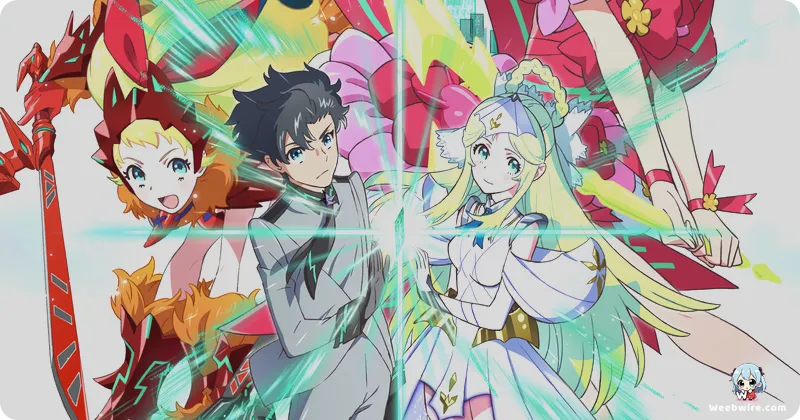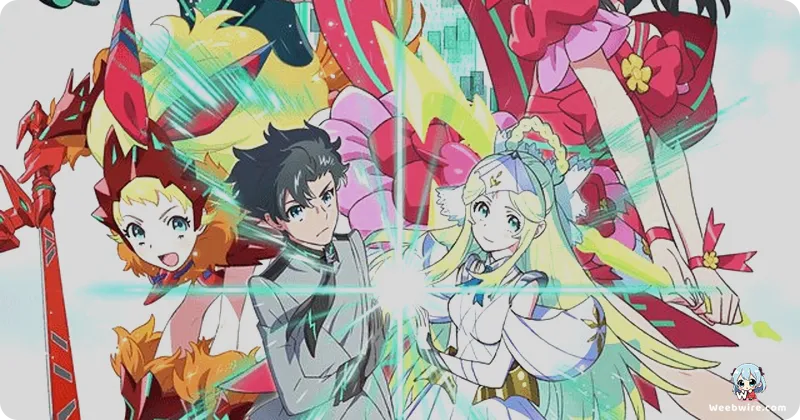Doga Kobo's Risky Pivot: Unpacking the TCG Origins and Genre Mismatch of the 'Luck & Logic' Franchise

Analyzing Doga Kobo's Departure into Action Fantasy
The 2016 anime series Luck & Logic occupies a fascinating and slightly contradictory position within the extensive portfolio of animation powerhouse Doga Kobo. While the studio is internationally celebrated for its mastery of the slice-of-life genre and charming comedy, responsible for hits like Yuru Yuri and Monthly Girls' Nozaki-kun, this particular project represented a dramatic, high-stakes departure into military fantasy and intense action.
To truly grasp the essence of Luck & Logic, one must first look beyond the surface narrative of Logicians battling interdimensional threats known as Foreigners and recognize its fundamental role as a strategic promotional instrument for Bushiroad. Crucially, Luck & Logic was conceived not merely as an anime, but as the primary marketing engine for a brand new trading card game (TCG) launched by Bushiroad, the publisher behind colossal multimedia franchises such as Cardfight!! Vanguard.
The Imperative of TCG Promotion
Consequently, the 12-episode anime bore the heavy burden of rapidly introducing the TCG’s complex rules, expansive lore, and key character dynamics to a global audience. This promotional imperative directly influenced the narrative structure, often resulting in an overwhelming stream of specialized terminology, including concepts like 'Trance' and 'Logic', necessary for the card game but occasionally detrimental to the anime's dramatic flow. The speed at which character arcs progressed and major threats were resolved often prioritized showcasing diverse card mechanics and character combinations over traditional pacing and tension building.

The selection of Doga Kobo for this serious, action-oriented venture was itself a significant point of discussion. The studio had previously cemented its identity almost exclusively through exceptionally polished, character-driven comedies. Luck & Logic demanded serious action choreography, darker themes, and a dramatic gravity that stood in stark contrast to Doga Kobo's established, vibrant aesthetic. While the animation quality remained high, some viewers noted a palpable disconnect, suggesting the studio's inherent style felt mismatched with the genre’s demands.
The Tonal Correction in Hina Logi
This internal tension was arguably resolved by the subsequent release of the spin-off, Hina Logi ~ from Luck & Logic, which premiered just one year later in 2017. Shifting dramatically away from the world-saving battles of the original, Hina Logi embraced Doga Kobo's core strengths. Set within the ALCA training school, the spin-off focused on a new, largely female cast navigating lighthearted school comedy and training exercises. This tonal pivot was a clear correction, re-contextualizing the franchise's core concepts through the studio’s recognized expertise.
The stark contrast between the original, serious military saga and its cheerful, slice-of-life successor offers a unique case study on how a studio’s specific identity can ultimately reshape a mixed-media franchise. Furthermore, the mythological complexity inherent in the lore, where Logicians partner with Foreigners drawn from diverse pantheons (e.g., protagonist Yoshichika Tsurugi Trancing with Athena, the Greek goddess of wisdom and warfare, while other characters partner with figures like Venus and Tamaki Yurine Trances with Nemesis), was designed to serve the TCG structure, where these entities represented different card types and play styles.
Luck & Logic stands as a definitive example of how multimedia strategy can dictate artistic direction, marking a critical, albeit brief, step outside Doga Kobo's comfort zone that ultimately informed the direction of its successful spin-off.
Credits
Luck & Logic
Author
Original Concept by Septpia
Cover Art
Mari Shimazaki
Studio
Doga Kobo
Publisher
Bushiroad
Producers





